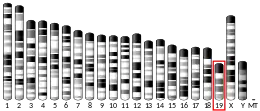| PSAT1 | |||||||||||||||||||||||||||||||||||||||||||||||||||
|---|---|---|---|---|---|---|---|---|---|---|---|---|---|---|---|---|---|---|---|---|---|---|---|---|---|---|---|---|---|---|---|---|---|---|---|---|---|---|---|---|---|---|---|---|---|---|---|---|---|---|---|
| |||||||||||||||||||||||||||||||||||||||||||||||||||
| Identifiers | |||||||||||||||||||||||||||||||||||||||||||||||||||
| Aliases | PSAT1, EPIP, PSA, PSAT, NLS2, PSATD, phosphoserine aminotransferase 1 | ||||||||||||||||||||||||||||||||||||||||||||||||||
| External IDs | OMIM: 610936 MGI: 2183441 HomoloGene: 6973 GeneCards: PSAT1 | ||||||||||||||||||||||||||||||||||||||||||||||||||
| |||||||||||||||||||||||||||||||||||||||||||||||||||
| |||||||||||||||||||||||||||||||||||||||||||||||||||
| |||||||||||||||||||||||||||||||||||||||||||||||||||
| |||||||||||||||||||||||||||||||||||||||||||||||||||
| |||||||||||||||||||||||||||||||||||||||||||||||||||
| Wikidata | |||||||||||||||||||||||||||||||||||||||||||||||||||
| |||||||||||||||||||||||||||||||||||||||||||||||||||
Phosphoserine aminotransferase (PSA) also known as phosphohydroxythreonine aminotransferase (PSAT) is an enzyme that in humans is encoded by the PSAT1 gene.[5]
The protein encoded by this gene is likely a phosphoserine aminotransferase, based on similarity to proteins in mouse, rabbit, and Drosophila. Alternative splicing of this gene results in two transcript variants encoding different isoforms.[5]
Clinical significance
Homozygous or compound heterozygous mutations in PSAT1 cause Neu–Laxova syndrome[6] and phosphoserine aminotransferase deficiency.[7]
See also
References
- 1 2 3 GRCh38: Ensembl release 89: ENSG00000135069 - Ensembl, May 2017
- 1 2 3 GRCm38: Ensembl release 89: ENSMUSG00000024640 - Ensembl, May 2017
- ↑ "Human PubMed Reference:". National Center for Biotechnology Information, U.S. National Library of Medicine.
- ↑ "Mouse PubMed Reference:". National Center for Biotechnology Information, U.S. National Library of Medicine.
- 1 2 "Entrez Gene: phosphoserine aminotransferase 1". Retrieved 2011-08-30.
- ↑ Acuna-Hidalgo R, Schanze D, Kariminejad A, Nordgren A, Kariminejad MH, Conner P, Grigelioniene G, Nilsson D, Nordenskjöld M, Wedell A, Freyer C, Wredenberg A, Wieczorek D, Gillessen-Kaesbach G, Kayserili H, Elcioglu N, Ghaderi-Sohi S, Goodarzi P, Setayesh H, van de Vorst M, Steehouwer M, Pfundt R, Krabichler B, Curry C, MacKenzie MG, Boycott KM, Gilissen C, Janecke AR, Hoischen A, Zenker M (2014). "Neu-Laxova syndrome is a heterogeneous metabolic disorder caused by defects in enzymes of the L-serine biosynthesis pathway". Am. J. Hum. Genet. 95 (3): 285–93. doi:10.1016/j.ajhg.2014.07.012. PMC 4157144. PMID 25152457.
- ↑ Hart CE, Race V, Achouri Y, Wiame E, Sharrard M, Olpin SE, Watkinson J, Bonham JR, Jaeken J, Matthijs G, Van Schaftingen E (2007). "Phosphoserine aminotransferase deficiency: a novel disorder of the serine biosynthesis pathway". Am. J. Hum. Genet. 80 (5): 931–7. doi:10.1086/517888. PMC 1852735. PMID 17436247.
Further reading
- Vié N, Copois V, Bascoul-Mollevi C, Denis V, Bec N, Robert B, Fraslon C, Conseiller E, Molina F, Larroque C, Martineau P, Del Rio M, Gongora C (2008). "Overexpression of phosphoserine aminotransferase PSAT1 stimulates cell growth and increases chemoresistance of colon cancer cells". Mol. Cancer. 7: 14. doi:10.1186/1476-4598-7-14. PMC 2245978. PMID 18221502.
- Basurko MJ, Marche M, Darriet M, Cassaigne A (1999). "Phosphoserine aminotransferase, the second step-catalyzing enzyme for serine biosynthesis". IUBMB Life. 48 (5): 525–9. doi:10.1080/713803557. PMID 10637769. S2CID 22449373.
- Baek JY, Jun DY, Taub D, Kim YH (2003). "Characterization of human phosphoserine aminotransferase involved in the phosphorylated pathway of L-serine biosynthesis". Biochem. J. 373 (Pt 1): 191–200. doi:10.1042/BJ20030144. PMC 1223456. PMID 12633500.
- Ozeki Y, Pickard BS, Kano S, Malloy MP, Zeledon M, Sun DQ, Fujii K, Wakui K, Shirayama Y, Fukushima Y, Kunugi H, Hashimoto K, Muir WJ, Blackwood DH, Sawa A (2011). "A novel balanced chromosomal translocation found in subjects with schizophrenia and schizotypal personality disorder: altered l-serine level associated with disruption of PSAT1 gene expression". Neurosci. Res. 69 (2): 154–60. doi:10.1016/j.neures.2010.10.003. PMC 3049551. PMID 20955740.
- Misrahi M, Atger M, Milgrom E (1987). "A novel progesterone-induced messenger RNA in rabbit and human endometria. Cloning and sequence analysis of the complementary DNA". Biochemistry. 26 (13): 3975–82. doi:10.1021/bi00387a035. PMID 3651428.
External links
- Overview of all the structural information available in the PDB for UniProt: Q9Y617 (Phosphoserine aminotransferase) at the PDBe-KB.
This article is issued from Wikipedia. The text is licensed under Creative Commons - Attribution - Sharealike. Additional terms may apply for the media files.



